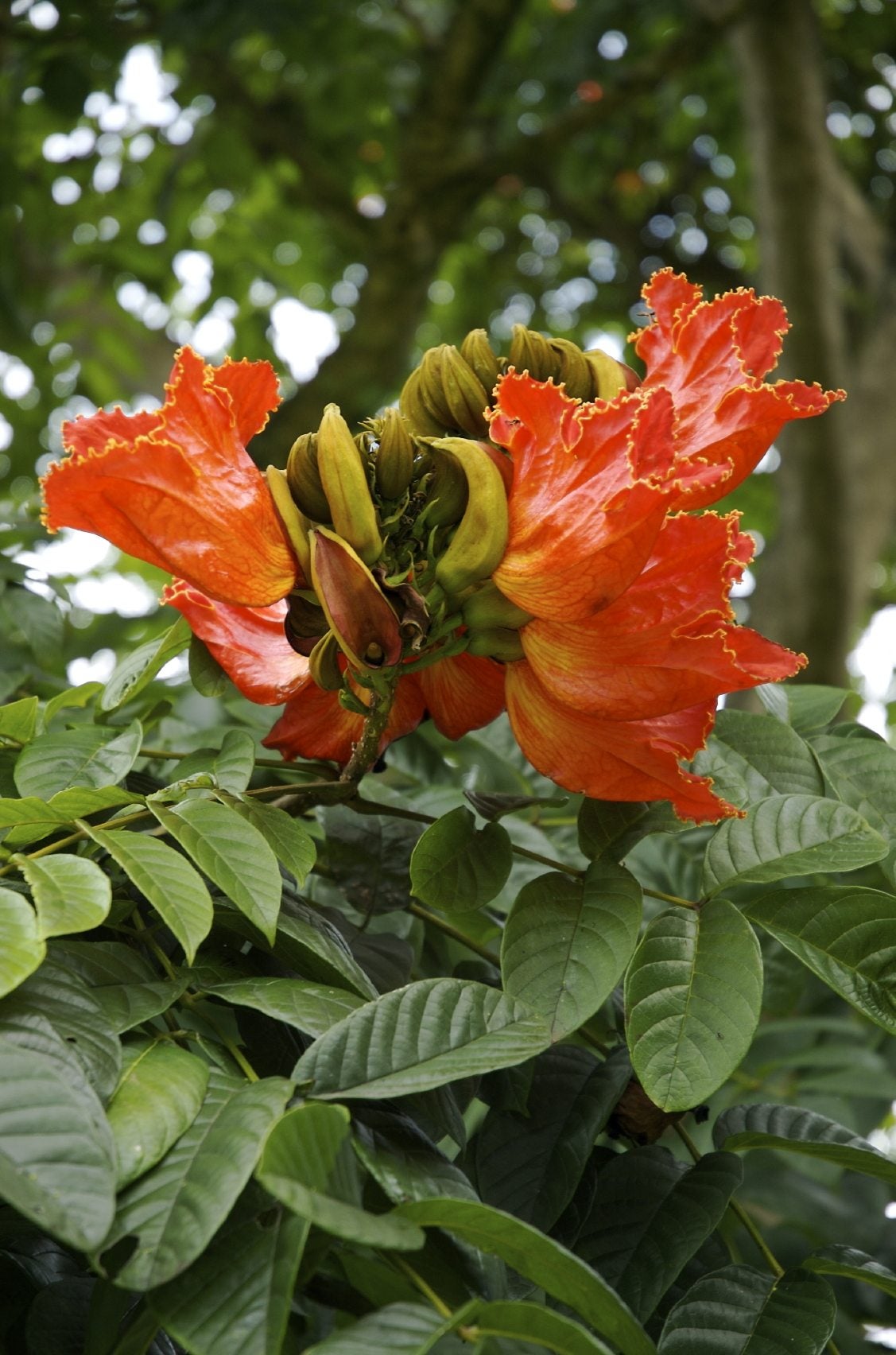African Tulip Tree Information: How To Grow African Tulip Trees


What is an African tulip tree? Native to Africa’s tropical rainforests, African tulip tree (Spathodea campanulata) is a big, impressive shade tree that grows only in the non-freezing climates of U.S. Department of Agriculture plant hardiness zones 10 and above. Want to know more about this exotic tree? Interested in knowing how to grow African tulips trees? Keep reading to find out.
Is African Tulip Tree Invasive?
A cousin to the rambunctious trumpet vine, African tulip tree tends to be invasive in tropical climates, such as Hawaii and southern Florida, where it forms dense thickets that interfere with native growth. It is less problematic in drier climates like southern California and central or northern Florida.
African Tulip Tree Information
African tulip tree is indeed an impressive specimen with gigantic, reddish-orange or golden yellow trumpet-shaped flowers and huge, glossy leaves. It can reach heights of 80 feet (24 m.), but growth is usually limited to 60 feet (18 m.) or less with a width of about 40 feet (12m.). The flowers are pollinated by birds and bats and the seeds are scattered by water and wind.
How to Grow African Tulip Trees
African tulip trees are somewhat difficult to grow by seed but easy to propagate by taking tip or root cuttings, or by planting suckers. As far as growing conditions, the tree tolerates shade but performs best in full sunlight. Similarly, although it is relatively drought tolerant, African tulip tree is happiest with plenty of moisture. Although it likes rich soil, it will grow in nearly any well-drained soil.
African Tulip Tree Care
Newly planted African tulip trees benefit from regular irrigation. However, once established, the tree requires little attention. It is rarely bothered by pests or disease, but may temporarily shed its leaves during periods of severe drought. African tulip trees should be pruned regularly because the branches, which tend to be brittle, break easily in harsh winds. For this reason, the tree should be planted away from structures or smaller trees that may be damaged.
Gardening tips, videos, info and more delivered right to your inbox!
Sign up for the Gardening Know How newsletter today and receive a free copy of our e-book "How to Grow Delicious Tomatoes".

A Credentialed Garden Writer, Mary H. Dyer was with Gardening Know How in the very beginning, publishing articles as early as 2007.
-
 Moody Blooms For Spring: 8 Types Of Black Flowers To Add Drama To Spring Displays
Moody Blooms For Spring: 8 Types Of Black Flowers To Add Drama To Spring DisplaysFrom midnight burgundies to inky violets, several types of black flowers can enrich and embolden a spring display. Try these brooding bloomers for a moody garden
By Tonya Barnett
-
 Can Snake Plants Live Outside? Everything You Need To Know For Snake Plants Al Fresco
Can Snake Plants Live Outside? Everything You Need To Know For Snake Plants Al FrescoSnake plants can live outside given the right conditions, but be careful that they don't take over! Learn the best way to use snake plants in your landscape.
By Mary Ellen Ellis